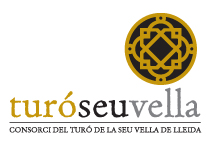The city of Lleida, like other cities, hides its history under its subsoil. As far as concerns the hill, excavations carried out in recent years have recovered ceramic, numismatic, objects, etc., materials that reveal a small but interesting example of the different times of occupation experienced on the hill and hidden by the military fortification.
Despite progress in understanding these early stages of occupation, the existence of the Iberian city of Iltrita still cannot be categorically confirmed, while structures of the Roman city of Ilerda have been found that allow us to speak of an organized city that was surrounded by a wall from the republican period.
More important are the remains of the buildings attached to the Andalusian occupation that prove continuous activity throughout the area of the hill from the 10th century until the conquest of the city in 1149. From this time, the hill was profoundly remodelled into an excellent gothic quarter, mainly ecclesiastical, but also noble, residential and university. The neighbourhood was totally destroyed between the 17th and 18th centuries, with the exception of the Seu Vella and the Castle of the King, the only buildings that have survived until today.





